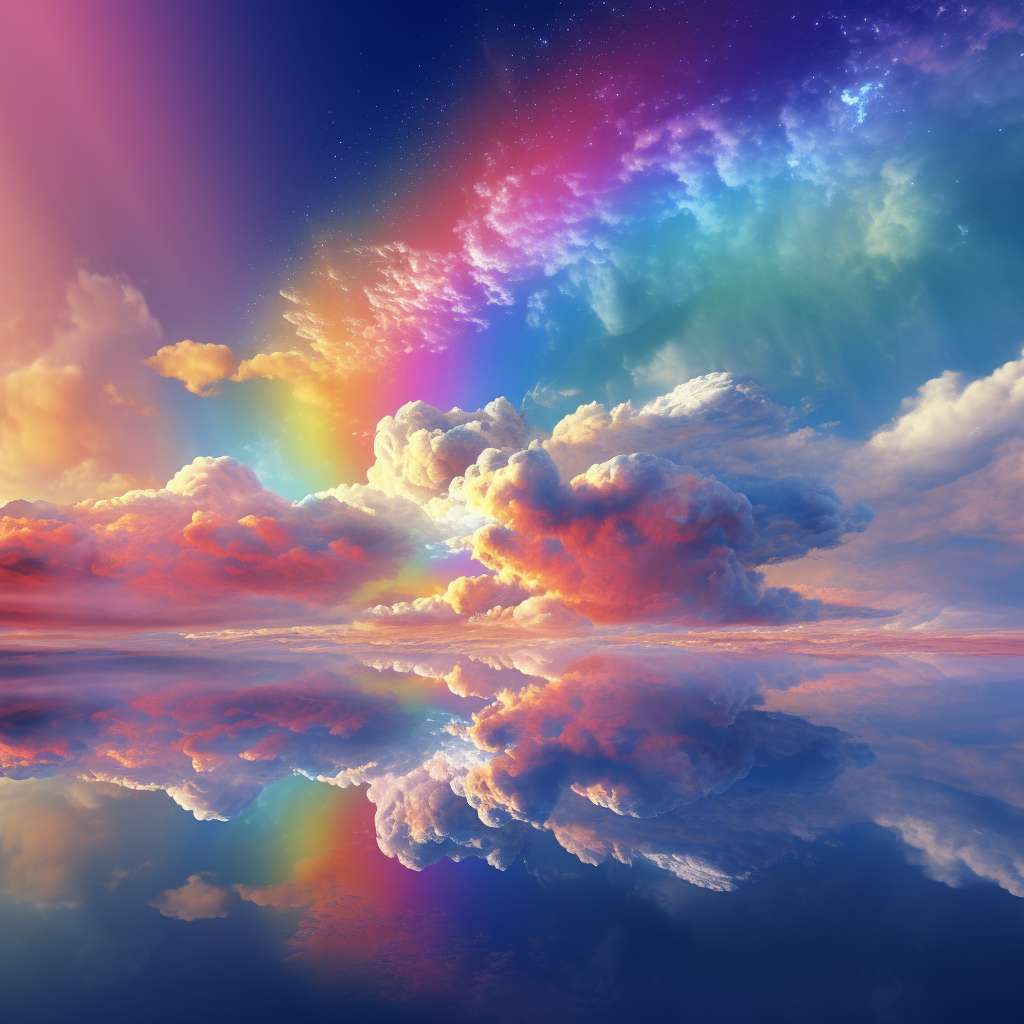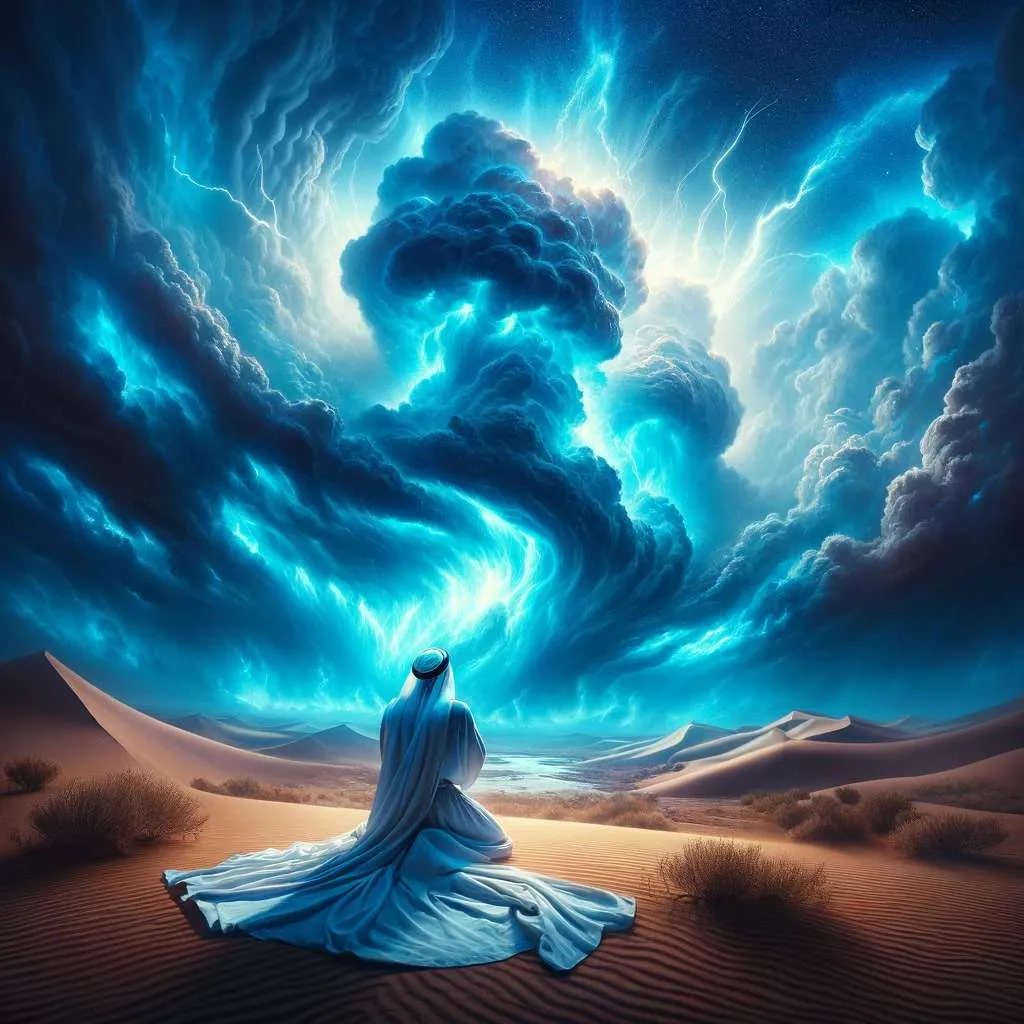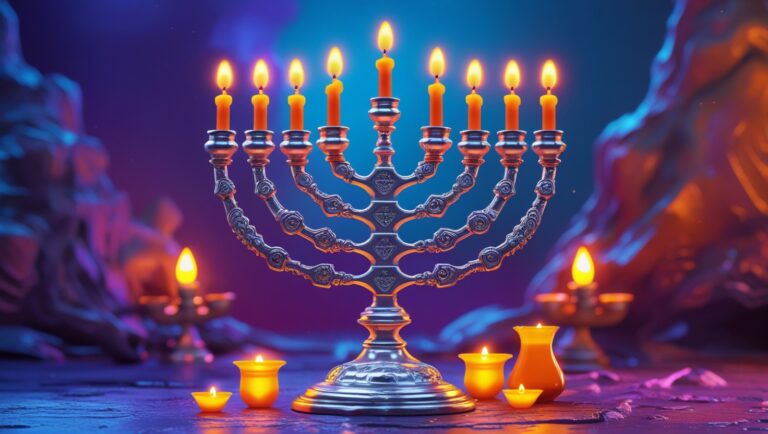The Beit HaMikdash According to the Ramchal
In the opening lines of Mishkaney Elyon, the Ramchal (Rabbi Moshe Chaim Luzzatto) lays out the purpose of his work with clarity:
“My purpose in this work is to discuss the subject of the Heavenly Temple mentioned by our sages, to explain its form and structure in all their various details, and to show how the earthly Beit HaMikdash is in direct alignment with it, both in structure and in all its dimensions.”
The concept of a Heavenly Temple (Heikhal shel Ma’alah) is rooted in several foundational sources in rabbinic literature. In the Talmud, we find the following statement:
“Rabbi Yochanan said: The Holy One, blessed be He, declared: ‘I will not enter the Heavenly Jerusalem until I enter the earthly Jerusalem.’ Is there then a Heavenly Jerusalem? Yes, as it is written (Psalms 122:3), ‘Jerusalem is built like a city that is joined to it together’” (Taanit 5a).
This Talmudic passage affirms the existence of a celestial counterpart to the earthly Jerusalem. It highlights a spiritual mirror-image between the two realms, one that must be activated in tandem.

The Zohar’s exposition
“The lower Sanctuary depends upon the Upper Sanctuary, and that Upper Sanctuary, in turn, depends upon another, higher Sanctuary, the most exalted of all. All of them are bound within one another, and this is the meaning of the verse: ‘And the Sanctuary was one’ (Exodus 26:6)” (Zohar, Pekudei II, 235a).
This mystical statement reveals an underlying truth: not only is there a Heavenly Sanctuary, but in fact, there are two levels: a higher and a lower, both intimately linked to the earthly Sanctuary. The phrase “And the Sanctuary was one” points to their unity and interdependence.
The title of the Ramchal’s work, Mishkeney Elyon (“Dwellings of the Supreme”), is drawn from Tehilim:
“There is a river whose streams bring joy to the city of God, the holy place of the dwellings of the Supreme (Mishkeney Elyon)” (Psalms 46:5).
This poetic verse can also be interpreted as an allusion to the two supernal Sanctuaries mentioned in the Zohar, showing that the Mishkeney Elyon are “Sanctuaries above”, a plural designation referencing their layered, heavenly architecture.
Further evidence of a structured Heavenly Beit HaMikdash appears in the Midrash. On the verse, “And it came to pass on the day that Moshe Rabbenu completed the erection of the Sanctuary” (Numbers 7:1), the Midrash teaches:
“Rabbi Shimon said: When the Holy One, blessed be He, commanded the Israelites to build the Sanctuary, He also hinted to the Ministering Angels to construct one above. When the earthly Sanctuary was erected, a corresponding Sanctuary was built in Heaven. This is the Sanctuary of the ‘lad,’ [the angel] whose name is Metatron, where he offers the souls of the righteous as atonement for Israel during their exile.” (Bamidbar Rabbah 12:13)
According to this Midrash, the construction of the physical Mishkan triggered a parallel act in the celestial realms. The angel Metatron oversees this upper Sanctuary, where he carries out spiritual functions on behalf of Israel, especially in times of exile, when the physical Beit HaMikdash is no longer standing.
In Mishkeney Elyon, the Ramchal seeks not only to describe this heavenly structure, but to map its architecture in precise detail, uncovering the deep correspondences between the earthly and supernal realms. Through this work, he reveals how the Beit HaMikdash is not merely a building of stone and gold, but a cosmic structure rooted in the highest spiritual worlds.
The Supreme Beit HaMikdash
The Zohar, as previously cited, reveals that even higher than the angelic Heavenly Sanctuary stands a more exalted structure, the supreme Sanctuary. This is the true subject of the Ramchal’s Mishkeney Elyon.
He writes:
“This holy House was created before the worlds. For it is from this House that all created beings receive their power and sustenance.”
This is the Holy Temple that the prophet Yechezkel (Ezekiel) saw in his vision. Not merely symbolic, but the actual prototype of the future Third Beit HaMikdahs, destined to be built physically in this world.
Structure and Vision of Mishkeney Elyon
Ramchal begins the work by laying out the relationship between the supreme Heavenly Temple and its earthly counterpart. The Beit HaMikdash below is not merely modeled after the one above: it emanates from it, functioning as a holographic projection of the supernal structure.
He differentiates between the First, Second, and Third Temples, providing a Kabbalistic explanation for each. Among other insights, he explains why Yechezkel saw the vision of the Third Beit HaMikdash already at the time of the First Temple’s destruction, and why the Divine Presence (Shechinah) did not dwell in the Second Temple as it had in the First.

A Tour Through the Heavenly Temple
From there, Ramchal guides the reader through a detailed “tour” of the Heavenly Temple as described by Yechezkel. He analyzes each component: the Sanctuary, courtyards, gates, and chambers, explaining how their forms and precise dimensions correspond to specific spiritual forces: namely, the Sefirot and Divine Names in the upper worlds.
Each architectural element of the Beit HaMikdash is shown to be bound with higher spiritual realities. Nothing is incidental. Every measurement reflects a flow of Divine energy.
The Inner Meaning of Temple Service
The second part of Mishkeney Elyon focuses on the Order of the Beit HaMikdash’s Service. Ramchal places special emphasis on the deeper meaning of the korbanot (sacrifices). He writes:
“Every day, the lower realms need to draw close to the upper realms, so that the branches will be connected to their roots. In this way, the angels are bound to their roots, and the souls to theirs. It is the animal offering that brings the angels close, while the incense offering brings the souls close.”
This concept of reconnecting “branches” (created beings) to their “roots” (Divine sources) is vital to the Beit HaMikdash’s spiritual function. The sacrificial service becomes a cosmic act of restoration and unification.
Daily Service and the Flow of Sustenance
Ramchal’s exploration of the Beit HaMikdash’s rituals fulfills his promise in the book’s introduction: to reveal how Divine sustenance flows to all creatures, in every realm, each day, through the proper channels.
He writes of the Temple as the central mechanism through which God distributes energy, nourishment, and influence to the entire Creation, each in its designated time.
Prayer as a Temple Substitute
This vision also sheds light on the deeper meaning of daily Jewish prayer. According to Ramchal, the prayer services are not simply commemorations or replacements for Temple offerings. Rather, they functionally align with the spiritual tasks that the sacrifices once performed.
In exile, prayer becomes the means by which the world maintains its connection to its Divine source. Through prayer, we continue the sacred work of binding the branches to their roots.
The Five Chapters: A Structured Summary
At the conclusion of the main body of Mishkeney Elyon, the Ramchal offers his readers a systematic summary. He writes:
“I will now provide a concise, orderly account of all the measurements of the Beit HaMikdash and its courtyards in all their details in five chapters.”
These five concluding chapters are composed in a terse, elegant style reminiscent of the Mishnah. They present a precise overview of the dimensions and layout of the entire Temple complex including its buildings, courtyards, gates, and stairways in a format designed for clarity and retention.
Ramchal’s Five Chapters closely parallel the structure and content of Tractate Middot, the mishnaic account of the Second Temple’s architectural design. They also bear resemblance to the Rambam’s Hilchot Beit HaBechirah in the Mishneh Torah, where the Rambam similarly outlines the plan of the Beit HaMikdash in halachic language.
By ending Mishkeney Elyon with this concise restatement, Ramchal follows a pattern seen in several of his other works: offering a distilled, accessible summary of the material for review and practical study. In doing so, he provides students and scholars with an invaluable tool for internalizing the intricate teachings laid out in the main body of the work.

Keys to the Third Temple
In Mishkney Elyon, the Ramchal provides essential keys to understanding both the physical structure and the spiritual essence of the future Third Beit HaMikdash.
The Rambam himself acknowledged the difficulty of interpreting Yechezkel Temple vision:
“Even though the building destined to be built in the future is written about in Yechezkel, it is not explained nor is it clear.” (Hilchot Beit HaBechirah 1:4)
Indeed, even the sages of the Mishnah grappled with contradictions between Yechezkel’s descriptions and established Halachah. The Talmud relates:
“Rav Yehudah said in the name of Rav: Hananiah ben Hizkiah is most certainly remembered for good, for if it were not for him, the Book of Yechezkel would have been removed from the canon because his words seem to contradict the Torah. What did Hananiah do? They brought him up three hundred barrels of oil [for light and sustenance], and he sat in an attic and reconciled all the difficulties.” (Shabbat 13b; see also Menachot 45a)
Despite Hananiah ben Hizkiah’s monumental efforts, the meaning of Yechezkel’s vision has remained elusive to most, with many passages defying interpretation even with the aid of classical commentators. Attempting to reconstruct the layout and significance of the Beit HaMikdash described by Yechezkel can be daunting.
In this light, the Talmud’s praise for Hananiah may well be applied to the Ramchal. Through Mishkney Elyon, he elucidates the structure, function, and spiritual blueprint of the Third Temple with the precision and clarity of a halachic master, offering a level of insight that had remained inaccessible for centuries.
The Temple as the Heart of the Devotional System
Since the erection of the Mishkan in the wilderness, the Beit HaMikdash has stood at the center of the Torah’s spiritual system. It was from the Holy of Holies that Moshe and all later prophets received prophecy. It was to the Sanctuary in Shilo that Hannah came, pouring out her soul in silent prayer, creating the archetype of Tefilah for all generations.
Hints about the deeper meaning of the Temple and its service appear throughout the writings of the Zohar, the teachings of the Arizal, and the writings of later Kabbalistic sages. Yet nowhere in the corpus of rabbinic literature is the spiritual and cosmic function of the Temple laid out as systematically and clearly as in Mishkney Elyon.
Ramchal’s work does not merely interpret the external form of the Beit HaMikdash, it reveals its inner essence. The Temple, he teaches, encompasses the entire system of the Sefirot and all the spiritual worlds. Understanding its design is tantamount to understanding the structure of Creation itself.
A Work of Profound Depth
That said, Mishkney Elyon is not a simple work. It delves into themes that touch the highest spiritual realities, the secrets of Maaseh Bereishit (the Work of Creation) and Maaseh Merkavah (the Work of the Chariot). These are matters that demand reverence, humility, and sincere prayer for Divine guidance.
Studying this work is a spiritual journey. The Ramchal opens a gate to the hidden wisdom behind the Temple and its service, not just for scholarly exploration, but as preparation for the ultimate redemption and the rebuilding of the House that will stand forever.

Ready-Made from Heaven or Built by Man?
A classic question in Jewish thought concerns the nature of the Third Beit HaMikdash: Will it descend from Heaven fully formed, or must it be physically built by human hands?
Rashi addresses this directly:
“The future Temple for which we are waiting will be revealed and come down from Heaven fully built and complete, as it is written, ‘The Sanctuary, God, that Your hands established’” (Exodus 15:17).
(Rashi on Succah 41a; see also Rashi on Rosh Hashanah 30a and Tosafot on Shavuot 15b)
In contrast, the Rambam holds that Mashiach’s primary role is to build the Beit HaMikdash himself:
“The Mashiach will build the Temple in its place” (Hilchot Melachim 11:4)
At first glance, these views seem contradictory. But the Ramchal resolves this apparent conflict by revealing that both are true, each expressing a different aspect of a unified process.
He writes:
“In time to come, not only will the Heavenly and earthly Beit HaMikdash be similar. The Upper House will extend until it reaches the lower world. This is the meaning of the saying of our Rabbis that the Third Temple will be the work of the hands of God.
For the Heavenly Temple will not be uprooted from its place. Rather, it will extend downward until it reaches this world. Around it, a physical structure will then be built as befits this material world. The two structures will be joined and become one, never to separate again.
God’s glory will be fully revealed there, as it is said: ‘And the glory of God will be revealed, and all flesh will see it together’ (Isaiah 40:5). Then there will be complete peace and happiness forever.”
According to the Ramchal, the Third Temple will manifest through a fusion of Heaven and Earth. A spiritual emanation of the supernal Beit HaMikdash will descend into the lower world, and around it, a physical structure will be constructed by human beings. The result will be a single, unified Temple, part divine, part material, fully integrated and eternal.
Bringing the Temple into the World
Through his profound explanation of Yechezkel’s vision, the Ramchal has already helped “bring down” the idea of the Third Beit HaMikdash into this world, at least in spiritual and intellectual form. His work enables us to grasp what was once cloaked in mystery, opening the gates of understanding for all who seek to comprehend the purpose and design of the final Temple.
The more deeply people study and internalize the Beit HaMikdash structure and significance, the closer the world will come to its ultimate healing. In the words of the Ramchal’s vision, the day will come when humanity will abandon its endless cycles of conflict and destruction, and instead unite to serve the One God, in peace, clarity, and joy, in the House that will never again be destroyed.
May we merit seeing its rebuilding.







